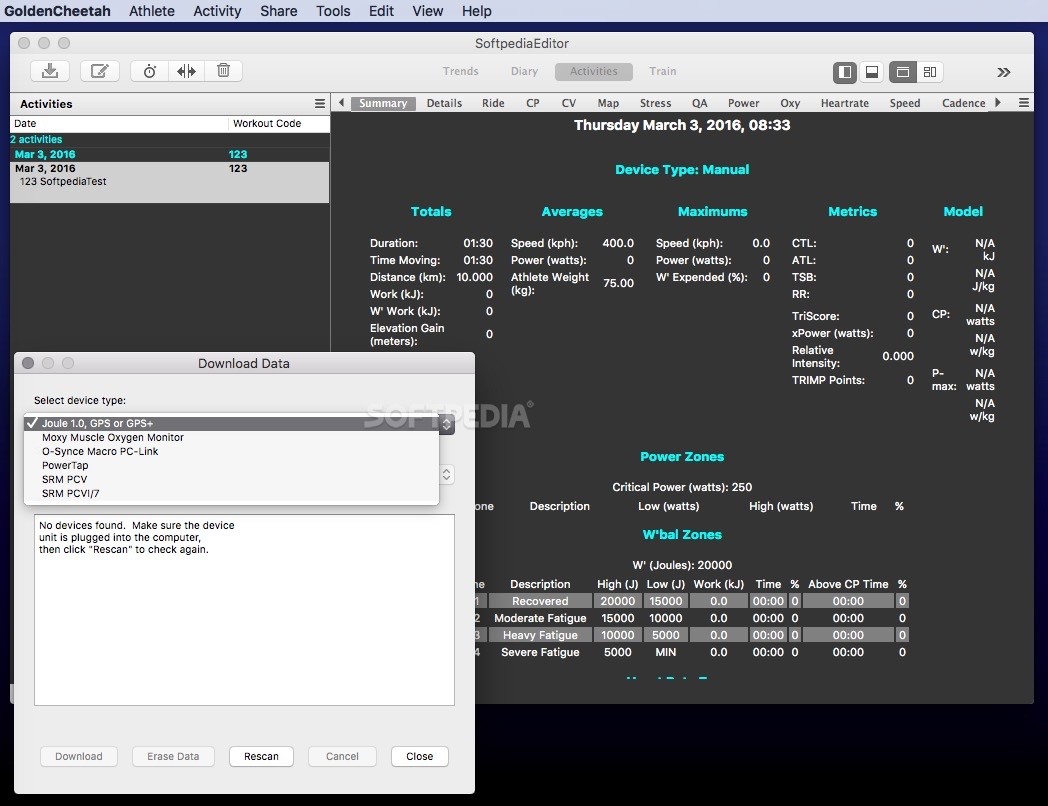

The program to prepare and annotate the data is a set of data filter functions. This is useful for tracking training load, performance changes as well as weight.ĭata can be prepared to display as a data table on an overview dashboard. The program to calculate the KPI is a datafilter. KPIs can be calculated to measure progress to a goal and displayed on an overview dashboard.
#Where does goldencheetah install code
User Metrics are written using expressions, a small program consisting of a number of functions that control when a metric is computed and a small piece of code to calculate the metric for an interval or activity. Working with the trends chart and performance (ride) chart you can create a formula to prepare data to plot on trends the formula is applied for every activity, on the performance chart it is applied once for every data point (sample) in the ride. For example a trends chart might only show run type activities with isRun. Many charts also have a filter box that can be used to limit what data is shown on the chart. Average_Power > 200 will filter activities with an average power of the entire activity that is over 200 watts.
#Where does goldencheetah install full
Where can these expressions be used ?Įxpressions can be used in a number of places, from just searching and filtering through to full blow user defined charts and metrics:Įxpressions can be used in the search/filter box at the top right of the screen using very simple logical expressions e.g. For richer analytics, perhaps involving machine learning, matrices and statistics we would recommend using either the R Chart or the Python Chart. These expressions are still intended to be a gentle introduction into more sophisticated analytics, they allow you to wrangle data, work with vectors, work with sports models, and data managed in GC. Now with version 3.6 development, the expressions have been extended to support a new user chart with syntax and functions heavily borrowed from the R Programming Language. Largely focused on preparing data to plot, the expressions became more sophisticated over time. I can provide more data about the issue if needed.Around version 3.3 in 2015 the old filtering code was extended to allow full blown programs and analyses to be written. Is there any way to fix this issue? Am I doing something wrong? All the other features of the watch are working as expected. However, my watch is showing me that my VO2 max is currently around 37 (screenshot in attachment) and that my fitness age is 55 which is totally wrong in my opinion and this number is getting worse with every new activity. On top of that, I've lost almost 10kg since December and my stamina is getting better while my VO2 max readings are getting worse and worse according to the watch.īased on this info my estimated VO2 max should be around 53-58 if I'm using the formula: My resting heart rate is around 50-55 and my max heartbeat is around 195.

I'm 25y old, my height is 188cm and weight is 95kg and I would say my fitness level is above average. I've tried asking around and searching on the web for the answer but I've found nothing that would solve my issue. I have a Suunto 9 watch for a bit more than 1 year now and I'm experiencing issues with the VO2 max feature.


 0 kommentar(er)
0 kommentar(er)
